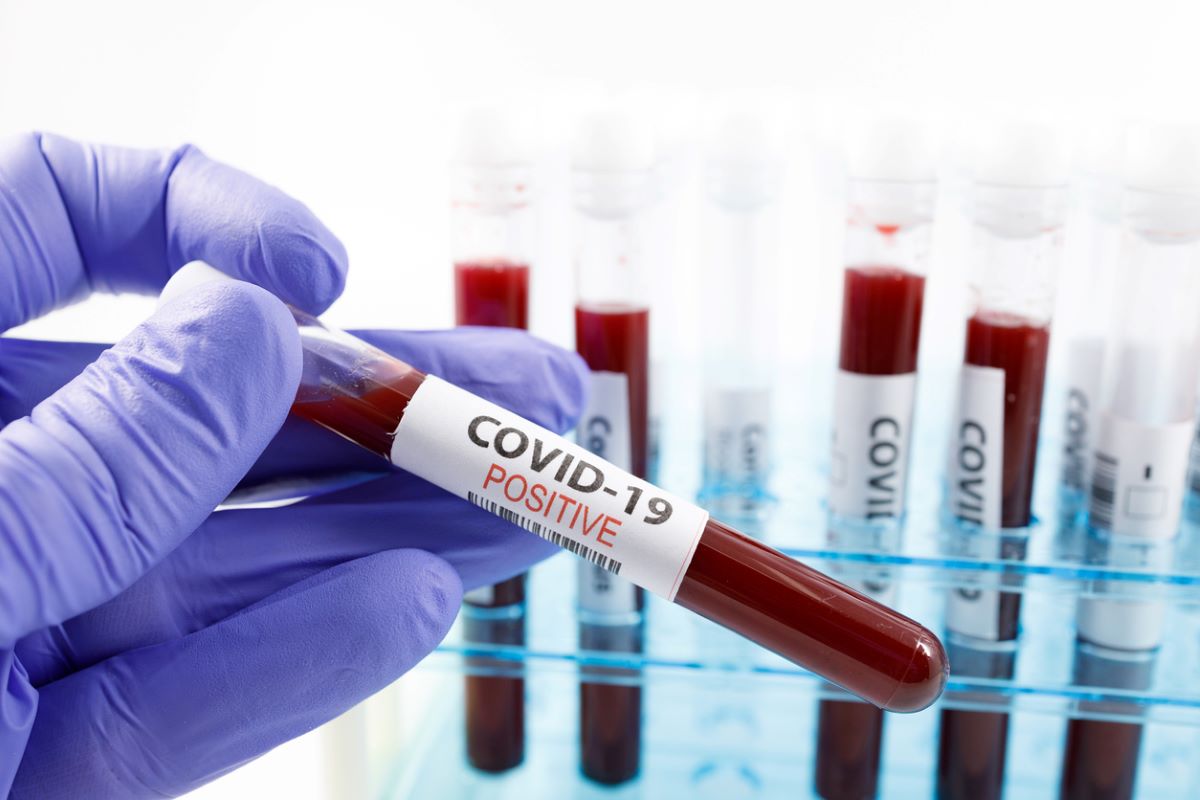An international research group has demonstrated a novel process of early detection of Covid-19 infection through non-ionizing radiation called Terahertz Ray ( T – Ray). This demonstration has been conducted under the Ex Senior Scientist under DRDO Govt of India & presently attached with Kolkata based Adamas University as Professor & Dean, Prof. (Dr.) Moumita Mukherjee.
The research group consists of Dr. Swarnava Biswas, from Neotia University, Kolkata, Dr. Dinesh Bhatia from NEHU, Assam, and Dr. Pranjal Phukan, from NEIGHRIMS, and Mr. Saikat Adinkari who is pursuing Ph.D. at Adamas University.
Advertisement
Dr. Moumita Mukherjee explained that this technique could make a revolution in the early detection of the fatal covid 19 and could save a life. She also explained that research in this domain got recognition from various healthcare industries for the funding. The researchers are in the process of getting ethical clearance from suitable organizations to continue and implement the technique in real life.
As per Dr. Moumita Mukherjee, this research took nearly 2 years to complete. Explaining the idea behind this research Dr. Mukherjee said that when the COVID-19 pandemic hit the country, RTPCR was the major primary way to diagnose an active COVID-19 infection.
Researchers were naturally pursuing alternatives that may provide other advantages in that. Dr. Mukherjee was working on Government & Industry projects for the development of suitable Terahertz sources and detectors to identify cancerous tumors at a very early stage. From here she got the idea that why not develop any non-invasive technique for the detection of Covid infection. And that was the time when she commenced this project.
What is Terahertz Ray ( T – Ray)?
The terahertz range refers to electromagnetic waves with frequencies between 100 GHz and 10 THz, or wavelengths between 3 mm and 30 μm. Light (T-Ray) between radio waves and infrared has some unique properties.
Terahertz can “look inside” plastics and textiles, paper, and cardboard. Researchers all over the world are doing work in the field to identify cancerous tumors at a very early stage. Most of the imaging units are available now, for medical imaging purposes working on X-Ray (CT scan machine, PET scan machine, Mammogram, etc). Both Terahertz (THz) and X-ray fall under the EM spectrum. Both are used for unique applications. Though they have some similarities, there are differences too.
The frequency range of Terahertz (T-Ray) is lower than X-Ray. Photon energy is also lower in T-Ray compared to its X-Ray counterpart and most importantly, T-Ray is non-ionizing in nature, unlike X-Ray and repeated application of Terahertz radiation on the human body (say for imaging purposes) will not create any harm. On the other hand, X-Ray causes ionization and hence it often leads to cancer.
Therefore T-Ray could be employed as a better alternative to X-ray-based imaging systems for biomedical applications.
The summary of the research:
Briefing the research and how it will help in the early detection of Covid-19 Dr. Mukherjee explained, that with the unique absorption fingerprint of T-ray radiation in respiratory systems and the contrast, a thermal image of affected and healthy upper & lower respiratory organs will help doctors and paramedical staff identify such cases at an early stage when the patient is apparently asymptomatic and not showing any virus symptoms.
During its incubation period, Coronavirus stays within the cell of the upper respiratory tract and its presence often causes an increased level of blood supply to the virus-affected cells / inter-cellular region that results in a localized increase of water content in those cells & tissues in comparison to its neighboring normal cells.
Under THz-radiation exposure, the incident energy gets absorbed more in virus-affected cells / inter-cellular region and gets heated; thus, the sharp temperature gradient is observed in the corresponding T-Ray thermograph study. Additionally, structural changes in virus-affected zones make a significant contribution to getting better contrast in thermographs.
Detecting the virus at an early stage would help in isolating such individuals by following the principle of social distancing or self-quarantine in their homes for a period of 14 to 20 days may help in preventing the spread of this severe communicable disease.
The fundamental physics behind the biomedical diagnosis with T-ray depends on the distribution of water content in cells and biomolecules, which could be employed for screening body organs such as lower & upper respiratory organs/epithelium cells for diagnosing respiratory infections. The application of a terahertz imaging tool in such investigations has not yet been employed by any research group to date, as far.
Sample size and Research methodology:
Dr. Moumita Mukherjee explained that Terahertz source and detector development using Graphene are the initial steps. The radiation that is coming out from the source will incident the subject and the detector placed on the other side will absorb the signal. The changes in the signal pattern would be recorded and compared with the pre-loaded pattern through an AI model to get a picture of the viral infection.
She added, “We have incorporated techniques to improve the SNR to increase the T-ray penetration depth. The sample size was more than 1000 including males, females, and ages between 25 years to 80 years. Terahertz thermographs are generated and studied for the preliminary detection of viral infection. This system would largely be used for efficient screening purposes followed by confirmatory tests.”











